
18 October 2024
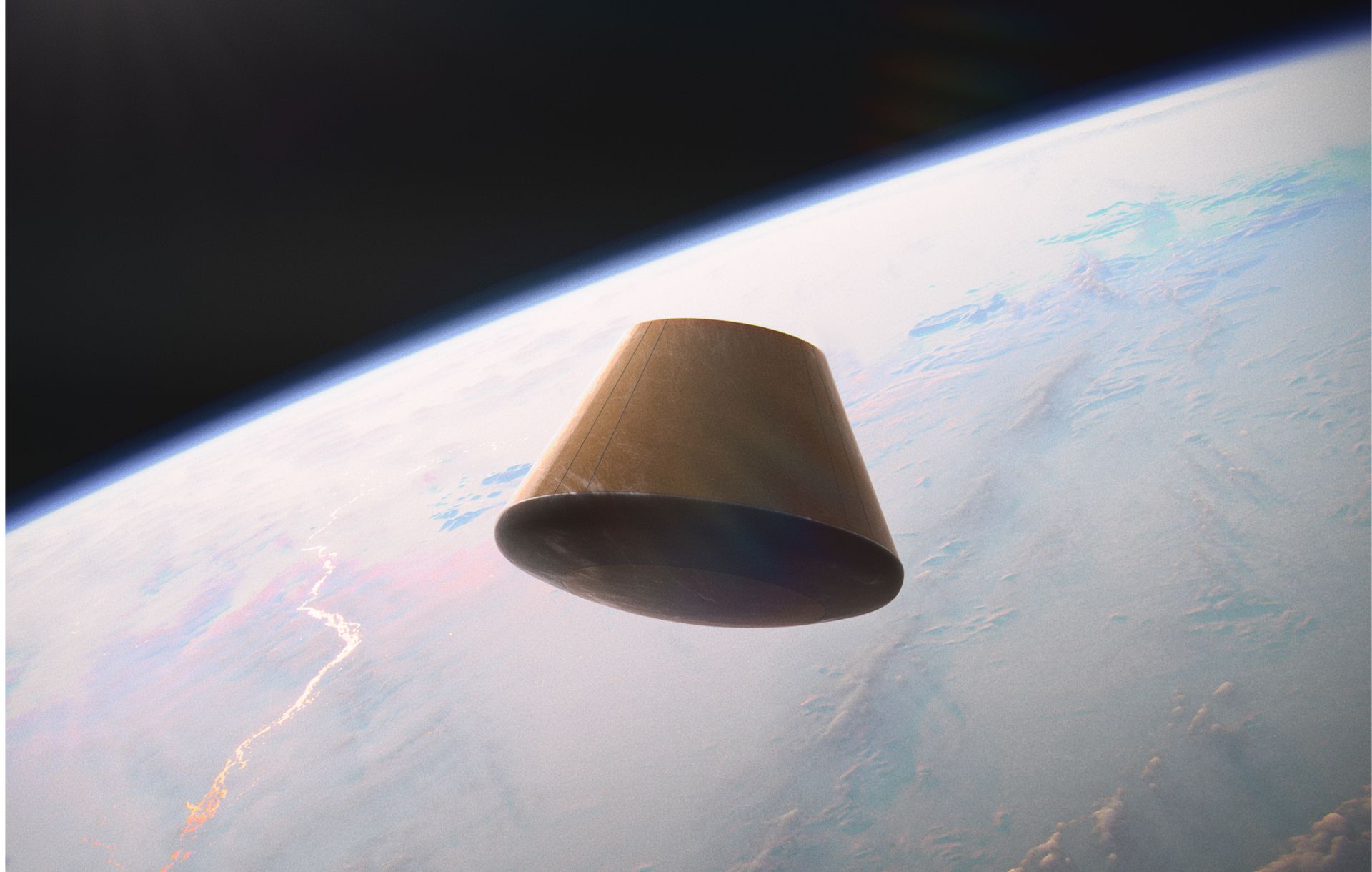
TEC's's Bikini Capsule (Image Render: The Exploration Company)
A year ago, European Space Agency (ESA) head Josef Aschbacher said that Europe “should not miss the train” when asked by the European Parliament's research committee about the potential for a European Moon base. At the time, he acknowledged that ESA faces challenges, including a budget that's only a quarter the size of NASA’s, a lack of independent access to space, and technological hurdles in building lunar infrastructure—all while competing with other global space leaders like China and India, who are also aiming to establish lunar infrastructure by 2030 and 2040, respectively.
One year later, the picture has shifted somewhat. On July 9, ESA celebrated the inaugural launch of its new Ariane-6 launch system, and just last week, the agency successfully launched its highly anticipated Hera mission, which will follow up on NASA's DART asteroid deflection test. Europe has also made strides in expanding its presence in lunar exploration, with iSpace Europe successfully developing the TENCIOUS lunar rover, which is set to be launched to the Moon with iSpace later this year.
At the International Astronautical Congress (IAC) in Milan this week, ESA also launched its Moonlight program, which aims to establish a constellation of satellites in lunar orbit to support future missions. The Moonlight Lunar Communications and Navigation Services (LCNS) constellation will consist of five satellites—four dedicated to navigation and one to communications—focused on exploring the Moon's south pole, where abundant resources like water are believed to exist.
Europe may also be closer to establishing independent transport capabilities to the lunar surface, with Franco-German startup The Exploration Company reportedly nearing a significant €150 million funding round. The company is developing its Nyx space capsule, a reusable crew and cargo vehicle designed to access both Earth orbit and the lunar surface. Their first demonstration capsule, called Bikini, was launched aboard the debut flight of Ariane-6, and they are targeting 2029 for Nyx’s first mission to the Moon.
Earlier this year, The Exploration Company also signed a cargo transport agreement with commercial space station developer Vast to supply their second Haven space station, which is scheduled to launch in 2028.
Europe may still lag behind NASA, China, and India in lunar development and establishing independent access to the Moon. However, with a growing European commercial sector and a strong determination to not "miss the train," Europe could soon step up and solidify its role as a leader in the emerging lunar economy.
IAC announcements: iSpace and ISRO lunar recognition, Astrolab unveil new lunar rover
This year’s IAC also highlighted innovations from other global leaders in lunar exploration. Japan's iSpace received the IAC’s Excellence in Industry Award for its Mission One achievement. The company sent its first commercial lander to the Moon, aiming to land in April 2023, but it experienced a hard landing. Despite this, iSpace successfully achieved eight out of ten mission objectives and has applied the lessons learned to its second landing attempt, scheduled for later this year.
Meanwhile, US-based Venturi Astrolab revealed details about a new, smaller lunar rover they are developing, called the FLEX Lunar Innovation Platform (FLIP), which could launch by the end of 2025. The goal is to use FLIP as a testing platform to inform the development of their larger FLEX rover. Astrolab is also leading one of three teams selected by NASA to develop a new Lunar Terrain Vehicle, designed to transport astronauts around the Moon's surface.
The Indian Space Research Organisation (ISRO), and specifically its Chairman, S. Somanath, received the IAC’s World Space Award for the success of the Chandrayaan-3 lunar mission. In August last year, India became only the fourth nation to achieve a soft landing on the Moon. Equally impressive was their ability to accomplish the mission at a fraction of the cost of similar efforts, with a total budget of just $75 million. This achievement highlights India's success in developing cost-effective and accessible lunar transportation solutions.
The IAC serves as a timely reminder of the significant milestones reached over the past 18 months. During 2023/24, we witnessed several commercial lunar missions, including the first successful landing by Intuitive Machines. Both India and Japan became the fourth and fifth nations to achieve soft landings on the Moon, and China made history by retrieving lunar samples from the far side for the first time. ESA predicts that there will be more than 100 lunar missions globally by the end of the decade. As we move into the end of this year and into 2025, we can expect even more lunar activity, with upcoming missions from iSpace (US), Astrobotic (US), Firefly Aerospace (US), Intuitive Machines (US), NASA’s Artemis II, and the joint Japanese-Indian Lupex mission.
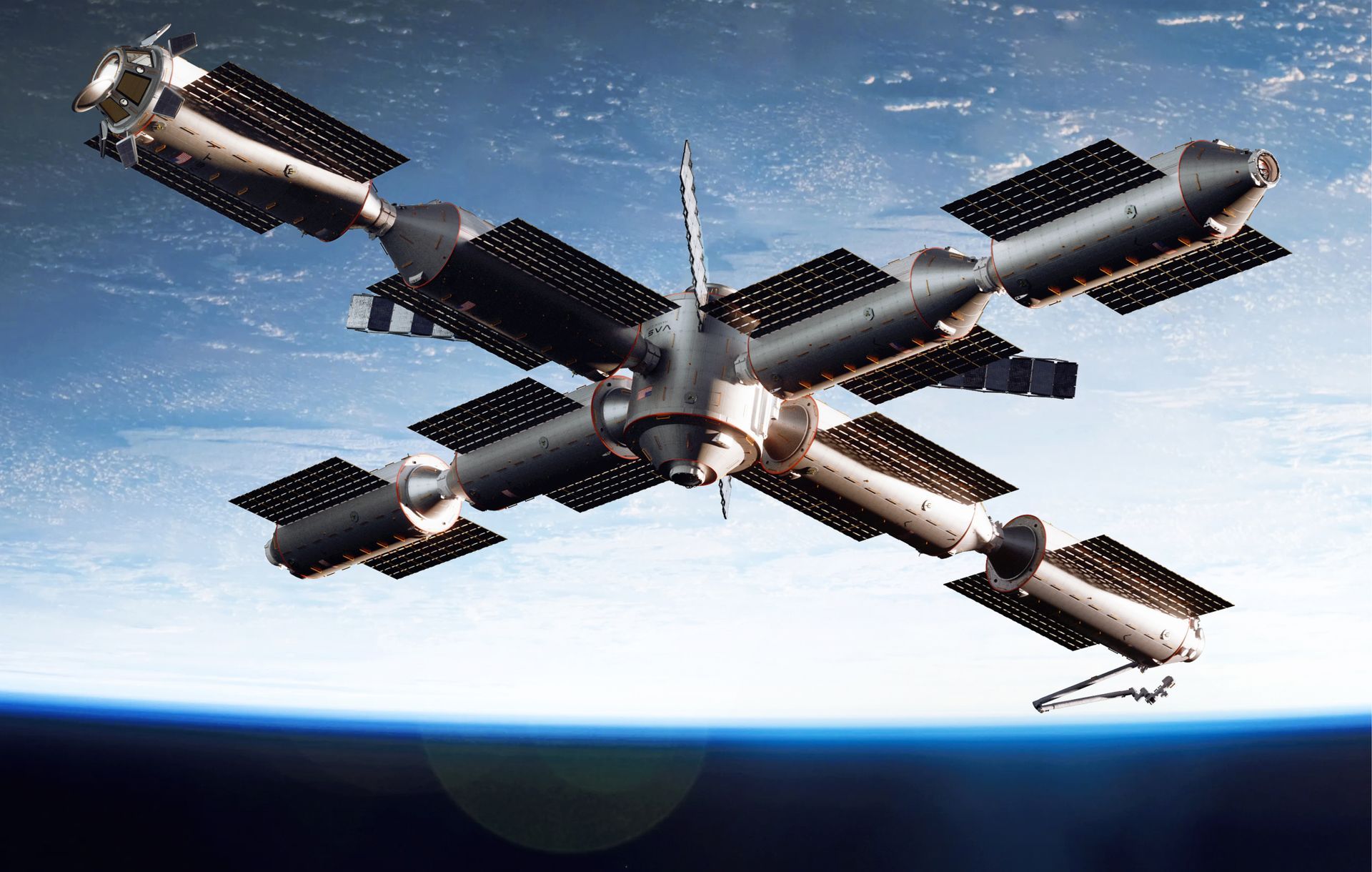
Illustration of Vast's Haven-2 (Image: Vast)
NASA consider commercial ISS replacement, Vast to begin Haven-2 space station
The IAC also provided NASA an opportunity to provide an update regarding their future presence in Earth orbit, with the ISS edging closer to retirement in 2030.
Deputy Administrator Pam Melroy discussed the potential of having continuous “continuous capability” to support a human presence in Earth orbit, admitting that their commercial partners building the replacements for ISS may not not initially have the capability to provide a “continuous” human presence to start with.
Robyn Gatens, ISS director at NASA Headquarters, added to this asking “do we need continuous heartbeat to achieve our objectives, or could we live with something like a crew-tended capability and maybe evolve to a continuous heartbeat?” A “continuous heartbeat” referring to a continuous crewed presence onboard a space station.
While there may not be a necessity with new space stations to have permanent human presence in-orbit, there would almost certainly bring about an element of competition, with China utilising their new Tiangoing station and hosting international experiments onboard in cooperation with the United Nations. Melroy reflected this position, saying that “…there’s a national posture element to it, to not have humans on orbit after what would be nearly 30 years of continuous presence.”
Nonetheless, NASA is hoping for rapid development and innovation from its selected partners through the Commercial LEO Development (CLD) program. One of those partners is the startup Vast Space. The company outlined its plans for the Haven-2 station at the IAC, with the first module scheduled for launch in 2028. It will then be expanded and completed between 2029 and 2032. Max Haot, CEO of Vast, stated that they expect Haven-2 to become "...more capable than anything China and Russia have in orbit at that time."
Other teams are developing their own alternative commercial outposts, including “Orbital Reef”, being led by Blue Origin and Sierra Space, as well as “Starlab”, a project led by Voyager Space and Airbus.
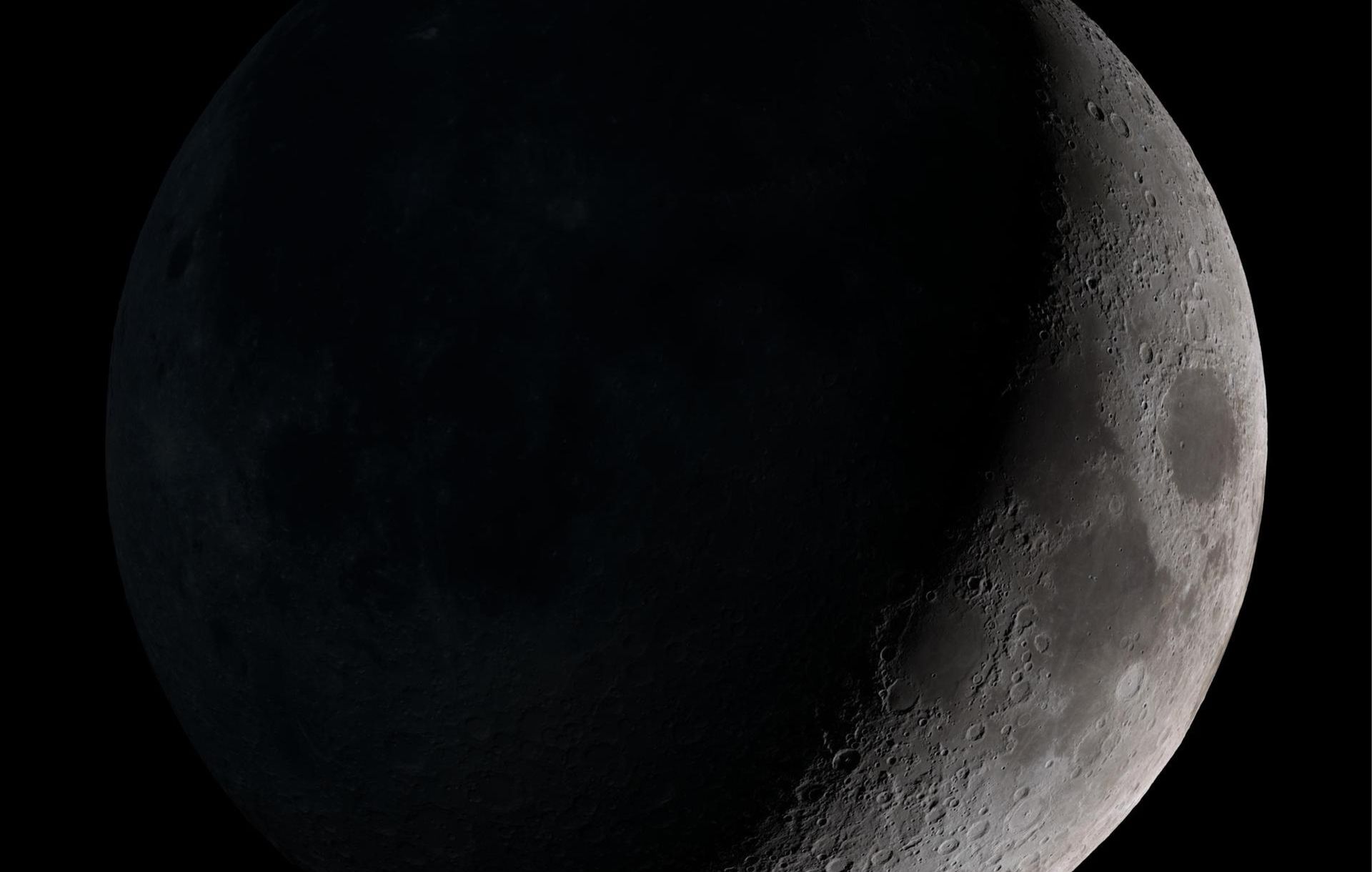
Image: NASA Goddard)
IAC shows power of innovation, but division still poses risk to stability
The IAC is a chance for agencies, companies and leaders in the space sector to showcase their innovations as well as attract new partnerships and develop cooperative projects. Space has long been a realm of cooperation, and continues to defy Earthly geopolitical divisions in many respects, such as through the ongoing cooperation between the US and Russia onboard ISS.
The spirit of cooperation is now needed more than ever, as the industry is increasingly driven by the private sector and the benefits of space resources and technology become more evident to civil society. With space evolving into a multi-stakeholder environment, it is only through collaborative approaches that we can ensure space exploration and development succeed for all of humanity.
However, deep concerns remain regarding diplomacy and defence. While space has the potential to unite, it is increasingly intertwined with geopolitical issues related to defence, weaponisation, and the securing of space resources.
In response to the Iranian attacks on Israel on October 1, the UK government has imposed sanctions on Iran, including the Iranian Space Agency, which develops technologies that have applications in ballistic missile development. This underscores the seamless connection between space, defence, and conflict zones. Additionally, this week, Iran has sent two domestic satellites to be launched by Russia. The US and its allies have repeatedly warned that such technology could be used to guide ballistic missiles, although Tehran claims that these satellites are intended for agricultural monitoring, resource management, disaster response, and environmental purposes.
Also this week, France and Germany joined the US-led Operation Olympic Defender project, strengthening US-European ties and cooperation in space defence. Olympic Defender was established in 2013 to enhance defence and coordination in response to cyber attacks, anti-satellite threats, and satellite jamming. This development is particularly significant given the rising tensions between the West, China, and Russia, with the US earlier this year accusing Russia of placing a counter-space weapon into orbit.
These instances serve as yet another reminder that while space is often touted as a means of improving life on Earth and providing shared benefits to humanity, it is also becoming an expanding frontier of defence.
Urgency for US-China dialogue amid growing lunar mission cadence
The increasing focus on space defence and the use of commercial applications for defence purposes—such as Starlink in Ukraine—comes at a time when nations and companies are ushering in a new era of lunar exploration. There is concern that the same geopolitical and economic rivalries could extend into outer space exploration, potentially undermining the key principles of peaceful exploration as defined in international law, particularly in the UN Outer Space Treaty.
Leading nations are continuing their efforts to establish responsible and sustainable practices for space exploration, with the US gaining two more members for its Artemis Accords in recent weeks: Estonia and the Dominican Republic. The Accords provide a non-binding set of norms and regulations for responsible behaviour in space, grounded in the principles of the Outer Space Treaty.
The Chinese-led International Lunar Research Station (ILRS) project has also gained significant traction in recent months, with China claiming to have the commitment of more than 10 countries and over 40 international organisations worldwide.
What’s more, at the UN Lunar Conference on Sustainable Lunar Activities this year, we observed a desire among nations and industry leaders to achieve safe, sustainable and transparent activities on the Moon, summed-up by the director of UNOOSA, Aarti Holla-Maini, saying that it had “…shown that there is a growing international consensus of the need for consultation and coordination on lunar exploration.
However, while the efforts of the UN and the Committee on the Peaceful Uses of Outer Space (COPUOS) provide unique platforms for discussion and dialogue, US-China international space relations remain strained due to a lack of communication and mistrust. When asked by Space.com at the IAC this week whether the US and China had engaged in conversations about the exploration of the lunar south pole, NASA head Bill Nelson replied, "The answer to that is no." He further noted, "I assume that there will be some conversations about deconfliction of orbits around the Moon, but those have not been held thus far. As for the south pole of the Moon, that's to be determined."
With a growing cadence of lunar missions and the potential for overlapping landing sites on the Moon, coordination among all nations will be vital in order to adhere to the Outer Space Treaty’s principles of avoiding harmful interference and maintaining safe and responsible practices. However, with NASA’s Artemis-III mission to return humans to the Moon just two years away and China taking its initial steps toward building a permanent lunar base, there is still much work to be done to ensure safe and responsible norms between these two superpowers.
The IAC has again proven how space can innovate rapidly and build relations. However, it is again proof how technology is outpacing law-making, faster than ever.

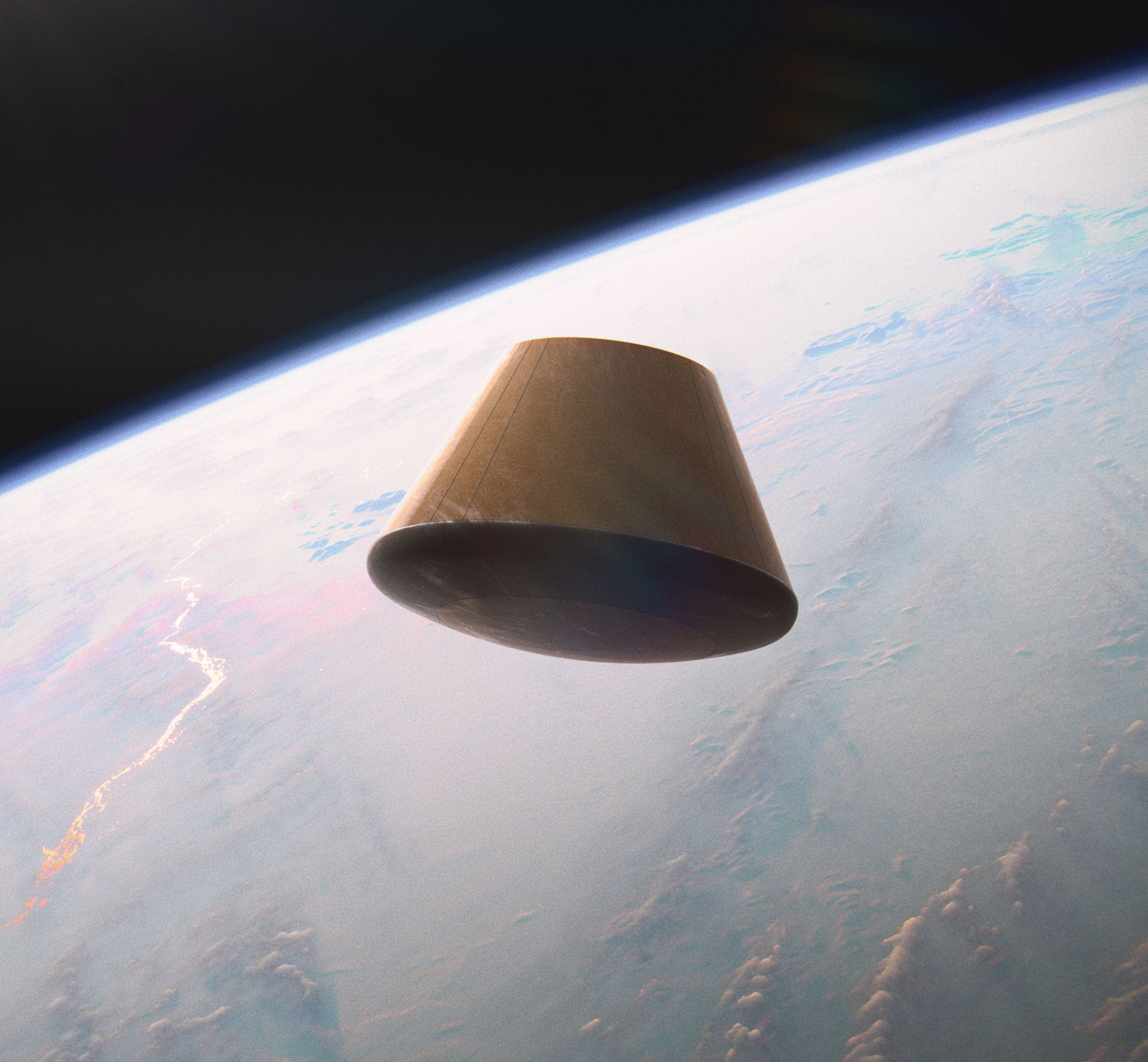
TEC's's Bikini Capsule (Image Render: The Exploration Company)
18 October 2024
IAC Special - Europe Emerging on the Moon, iSpace and ISRO Achievements Recognised, International Relations Remain Cool, and More… - Space News Roundup

A year ago, European Space Agency (ESA) head Josef Aschbacher said that Europe “should not miss the train” when asked by the European Parliament's research committee about the potential for a European Moon base. At the time, he acknowledged that ESA faces challenges, including a budget that's only a quarter the size of NASA’s, a lack of independent access to space, and technological hurdles in building lunar infrastructure—all while competing with other global space leaders like China and India, who are also aiming to establish lunar infrastructure by 2030 and 2040, respectively.
This isn’t to say that there haven’t been turbulent times innocent years, in the backdrop of the Ukraine conflict and subsequent fuel crisis, as well as deepening economic and geological rivalries elsewhere. Nonetheless, according to Seraphim Space, space startups have raised $1.9 billion in funding in the third quarter this year up a fifth on the year previous. Strong performers have been in the launch market and satellite manufacturing, marking something in a change. Previous investments had been dominated by the data analytics and satellite-imaging.
The UK has also made commitments to enhancing its role in the space sector, announcing the return of its Fusion Connect with Capital Programme, an initiative designed to fast-track small businesses within six months. In addition, the Indian government announced on October 6 that it will provide $119 million to a venture capital firm to fund space startups. Meanwhile, the Australian Space Agency, in partnership with creative agency Amplify, has announced a series of Cultural Briefings aimed at keeping brands aware of cultural developments, with space being viewed as a next-generation-defining theme.
Through the challenges and hurdles, it seems that space exploration and the space industry continues to climb on the global radar.
Starship test launch success and new era of launch vehicles
It’s been a challenging time for the nascent commercial launch industry, if we don’t count SpaceX (although they have and are suffering with some issues relating to their workhorse Falcon-9). Since the failed launch which led to the bankruptcy of Virgin Orbit, the delisting of Astra (US), an unexpected explosion of Rocket Factory Augsburg’s RFA ONE last month and an accidental launch by China’s Space Pioneer in June, amongst others.
However, we also note much positive activity in the commercial launch market, as well as the reported uptick in investment. United Launch Alliance’s Vulcan Centaur launched on Oct. 4, a critical test flight that brings the vehicle closer to certification for carrying national security payloads. This second flight is a key milestone for ULA as it looks to solidify Vulcan Centaur’s role in future national defence missions.
Meanwhile, Dawn Aerospace showcased impressive rapid reusability with its Mk-II Aurora rocket-powered aircraft, conducting two flights within just eight hours from New Zealand’s Glentanner Aerodrome. These tests, reaching speeds of Mach 0.9 and altitudes of 63,000 feet, are part of the company's broader efforts to expand the vehicle’s performance envelope, with the successful demonstration of same-day reusability underlining the potential for cost-effective, rapid turnaround in spaceflight operations.
PLD Space is also ramping up its efforts with the unveiling of its latest strategic plan. One year after the successful launch of MIURA 1, the Spanish company is on track with its MIURA 5 program, aiming to kick off its launch campaign by 2025. Notable advancements include a new re-entry and recovery system for the MIURA 5 1.2 model, which promises enhanced orbital capabilities, increased payload capacity, and lower operational costs, paving the way for more frequent launches.
Additionally, Rocket Lab secured a NASA contract to study the retrieval of rock samples from Mars. This project is part of NASA’s Mars Sample Return (MSR) program, which could revolutionise our understanding of the Red Planet and potentially provide answers about the existence of life on Mars. The results of Rocket Lab’s study will help shape future missions aimed at bringing Mars samples to Earth, a pivotal step in preparing for human exploration of the planet. It also signals the ongoing commercialisation of space, with NASA reaching out to the private sector in order to rescue its troubled MSR programme.
On Oct. 13, SpaceX launched its fifth Starship vehicle, achieving the first-ever successful “catch” of its Super Heavy booster at the launch site. The primary goal of this attempt was to capture the Super Heavy booster using its "chopstick" mechanism, a pair of mechanical arms. The Starship’s first stage followed a similar trajectory to previous tests and completed a powered landing in the Indian Ocean. This success marks another major milestone in SpaceX’s pursuit of rapid, full reusability for the world’s largest space launch vehicle, and is promising news for NASA, which has contracted SpaceX to provide a version of Starship for the crewed Artemis III lunar landing, planned for 2026.
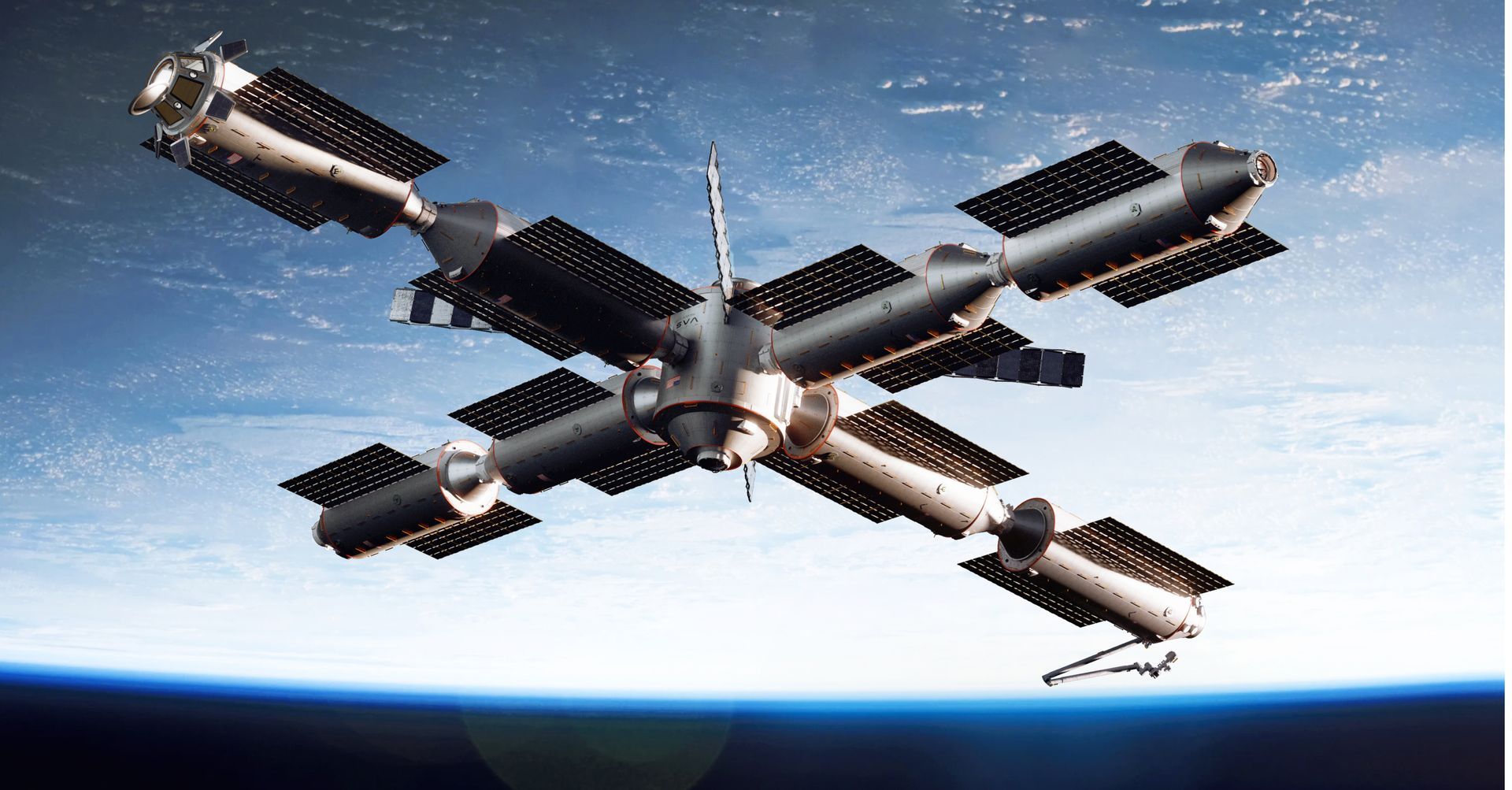
Illustration of Vast's Haven-2 (Image: Vast)
NASA consider commercial ISS replacement, Vast to begin Haven-2 space station
The IAC also provided NASA an opportunity to provide an update regarding their future presence in Earth orbit, with the ISS edging closer to retirement in 2030.
Deputy Administrator Pam Melroy discussed the potential of having continuous “continuous capability” to support a human presence in Earth orbit, admitting that their commercial partners building the replacements for ISS may not not initially have the capability to provide a “continuous” human presence to start with.
Robyn Gatens, ISS director at NASA Headquarters, added to this asking “do we need continuous heartbeat to achieve our objectives, or could we live with something like a crew-tended capability and maybe evolve to a continuous heartbeat?” A “continuous heartbeat” referring to a continuous crewed presence onboard a space station.
While there may not be a necessity with new space stations to have permanent human presence in-orbit, there would almost certainly bring about an element of competition, with China utilising their new Tiangoing station and hosting international experiments onboard in cooperation with the United Nations. Melroy reflected this position, saying that “…there’s a national posture element to it, to not have humans on orbit after what would be nearly 30 years of continuous presence.”
Nonetheless, NASA is hoping for rapid development and innovation from its selected partners through the Commercial LEO Development (CLD) program. One of those partners is the startup Vast Space. The company outlined its plans for the Haven-2 station at the IAC, with the first module scheduled for launch in 2028. It will then be expanded and completed between 2029 and 2032. Max Haot, CEO of Vast, stated that they expect Haven-2 to become "...more capable than anything China and Russia have in orbit at that time."
Other teams are developing their own alternative commercial outposts, including “Orbital Reef”, being led by Blue Origin and Sierra Space, as well as “Starlab”, a project led by Voyager Space and Airbus.

Image: NASA Goddard)
IAC shows power of innovation, but division still poses risk to stability
The IAC is a chance for agencies, companies and leaders in the space sector to showcase their innovations as well as attract new partnerships and develop cooperative projects. Space has long been a realm of cooperation, and continues to defy Earthly geopolitical divisions in many respects, such as through the ongoing cooperation between the US and Russia onboard ISS.
The spirit of cooperation is now needed more than ever, as the industry is increasingly driven by the private sector and the benefits of space resources and technology become more evident to civil society. With space evolving into a multi-stakeholder environment, it is only through collaborative approaches that we can ensure space exploration and development succeed for all of humanity.
However, deep concerns remain regarding diplomacy and defence. While space has the potential to unite, it is increasingly intertwined with geopolitical issues related to defence, weaponisation, and the securing of space resources.
In response to the Iranian attacks on Israel on October 1, the UK government has imposed sanctions on Iran, including the Iranian Space Agency, which develops technologies that have applications in ballistic missile development. This underscores the seamless connection between space, defence, and conflict zones. Additionally, this week, Iran has sent two domestic satellites to be launched by Russia. The US and its allies have repeatedly warned that such technology could be used to guide ballistic missiles, although Tehran claims that these satellites are intended for agricultural monitoring, resource management, disaster response, and environmental purposes.
Also this week, France and Germany joined the US-led Operation Olympic Defender project, strengthening US-European ties and cooperation in space defence. Olympic Defender was established in 2013 to enhance defence and coordination in response to cyber attacks, anti-satellite threats, and satellite jamming. This development is particularly significant given the rising tensions between the West, China, and Russia, with the US earlier this year accusing Russia of placing a counter-space weapon into orbit.
These instances serve as yet another reminder that while space is often touted as a means of improving life on Earth and providing shared benefits to humanity, it is also becoming an expanding frontier of defence.
Urgency for US-China dialogue amid growing lunar mission cadence
The increasing focus on space defence and the use of commercial applications for defence purposes—such as Starlink in Ukraine—comes at a time when nations and companies are ushering in a new era of lunar exploration. There is concern that the same geopolitical and economic rivalries could extend into outer space exploration, potentially undermining the key principles of peaceful exploration as defined in international law, particularly in the UN Outer Space Treaty.
Leading nations are continuing their efforts to establish responsible and sustainable practices for space exploration, with the US gaining two more members for its Artemis Accords in recent weeks: Estonia and the Dominican Republic. The Accords provide a non-binding set of norms and regulations for responsible behaviour in space, grounded in the principles of the Outer Space Treaty.
The Chinese-led International Lunar Research Station (ILRS) project has also gained significant traction in recent months, with China claiming to have the commitment of more than 10 countries and over 40 international organisations worldwide.
What’s more, at the UN Lunar Conference on Sustainable Lunar Activities this year, we observed a desire among nations and industry leaders to achieve safe, sustainable and transparent activities on the Moon, summed-up by the director of UNOOSA, Aarti Holla-Maini, saying that it had “…shown that there is a growing international consensus of the need for consultation and coordination on lunar exploration.
However, while the efforts of the UN and the Committee on the Peaceful Uses of Outer Space (COPUOS) provide unique platforms for discussion and dialogue, US-China international space relations remain strained due to a lack of communication and mistrust. When asked by Space.com at the IAC this week whether the US and China had engaged in conversations about the exploration of the lunar south pole, NASA head Bill Nelson replied, "The answer to that is no." He further noted, "I assume that there will be some conversations about deconfliction of orbits around the Moon, but those have not been held thus far. As for the south pole of the Moon, that's to be determined."
With a growing cadence of lunar missions and the potential for overlapping landing sites on the Moon, coordination among all nations will be vital in order to adhere to the Outer Space Treaty’s principles of avoiding harmful interference and maintaining safe and responsible practices. However, with NASA’s Artemis-III mission to return humans to the Moon just two years away and China taking its initial steps toward building a permanent lunar base, there is still much work to be done to ensure safe and responsible norms between these two superpowers.
The IAC has again proven how space can innovate rapidly and build relations. However, it is again proof how technology is outpacing law-making, faster than ever.
Share this article


18 October 2024
IAC Special - Europe Emerging on the Moon, iSpace and ISRO Achievements Recognised, International Relations Remain Cool, and More… - IAC Special

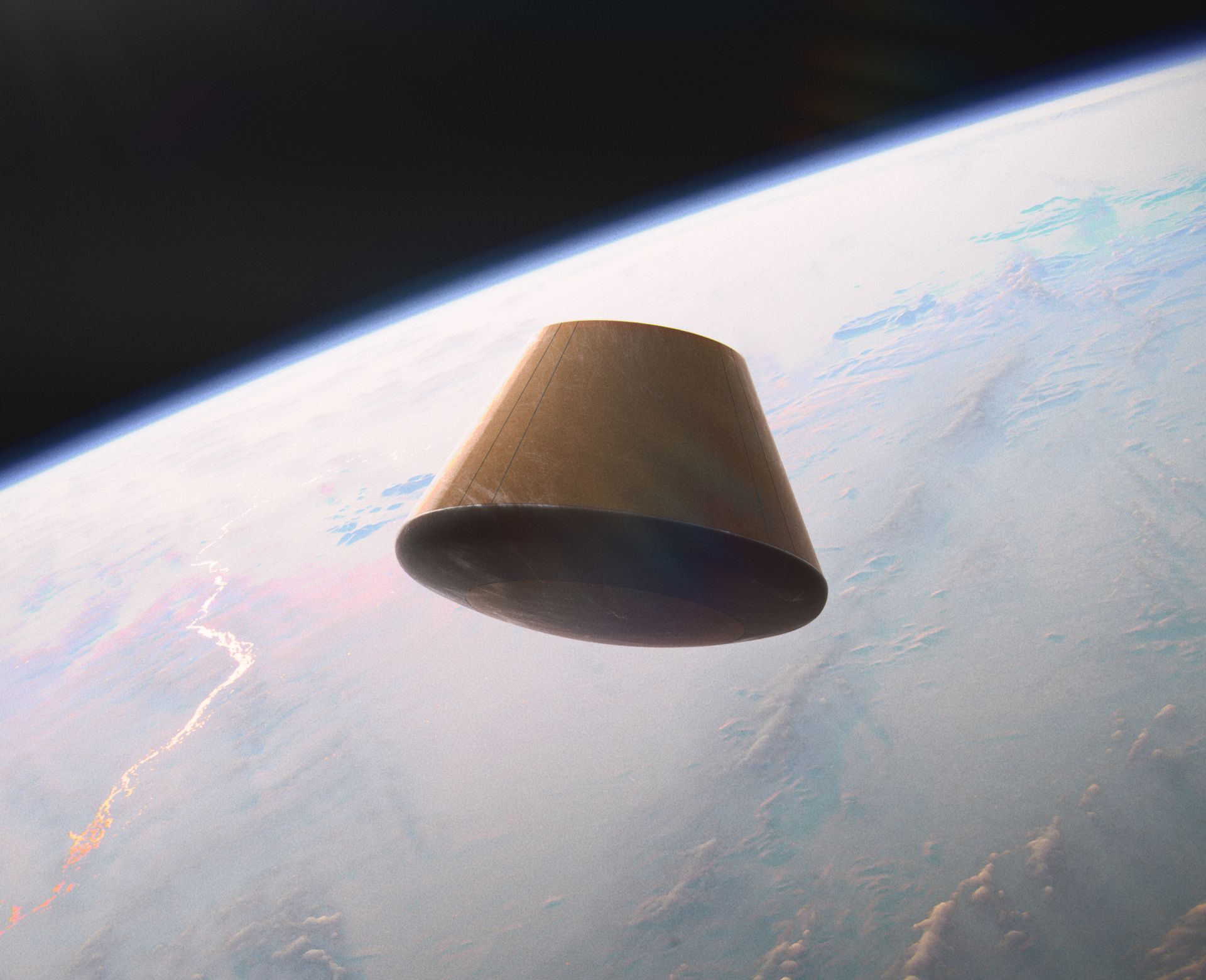
TEC's's Bikini Capsule (Image Render: The Exploration Company)
A year ago, European Space Agency (ESA) head Josef Aschbacher said that Europe “should not miss the train” when asked by the European Parliament's research committee about the potential for a European Moon base. At the time, he acknowledged that ESA faces challenges, including a budget that's only a quarter the size of NASA’s, a lack of independent access to space, and technological hurdles in building lunar infrastructure—all while competing with other global space leaders like China and India, who are also aiming to establish lunar infrastructure by 2030 and 2040, respectively.
One year later, the picture has shifted somewhat. On July 9, ESA celebrated the inaugural launch of its new Ariane-6 launch system, and just last week, the agency successfully launched its highly anticipated Hera mission, which will follow up on NASA's DART asteroid deflection test. Europe has also made strides in expanding its presence in lunar exploration, with iSpace Europe successfully developing the TENCIOUS lunar rover, which is set to be launched to the Moon with iSpace later this year.
At the International Astronautical Congress (IAC) in Milan this week, ESA also launched its Moonlight program, which aims to establish a constellation of satellites in lunar orbit to support future missions. The Moonlight Lunar Communications and Navigation Services (LCNS) constellation will consist of five satellites—four dedicated to navigation and one to communications—focused on exploring the Moon's south pole, where abundant resources like water are believed to exist.
Europe may also be closer to establishing independent transport capabilities to the lunar surface, with Franco-German startup The Exploration Company reportedly nearing a significant €150 million funding round. The company is developing its Nyx space capsule, a reusable crew and cargo vehicle designed to access both Earth orbit and the lunar surface. Their first demonstration capsule, called Bikini, was launched aboard the debut flight of Ariane-6, and they are targeting 2029 for Nyx’s first mission to the Moon.
Earlier this year, The Exploration Company also signed a cargo transport agreement with commercial space station developer Vast to supply their second Haven space station, which is scheduled to launch in 2028.
Europe may still lag behind NASA, China, and India in lunar development and establishing independent access to the Moon. However, with a growing European commercial sector and a strong determination to not "miss the train," Europe could soon step up and solidify its role as a leader in the emerging lunar economy.
IAC announcements: iSpace and ISRO lunar recognition, Astrolab unveil new lunar rover
This year’s IAC also highlighted innovations from other global leaders in lunar exploration. Japan's iSpace received the IAC’s Excellence in Industry Award for its Mission One achievement. The company sent its first commercial lander to the Moon, aiming to land in April 2023, but it experienced a hard landing. Despite this, iSpace successfully achieved eight out of ten mission objectives and has applied the lessons learned to its second landing attempt, scheduled for later this year.
Meanwhile, US-based Venturi Astrolab revealed details about a new, smaller lunar rover they are developing, called the FLEX Lunar Innovation Platform (FLIP), which could launch by the end of 2025. The goal is to use FLIP as a testing platform to inform the development of their larger FLEX rover. Astrolab is also leading one of three teams selected by NASA to develop a new Lunar Terrain Vehicle, designed to transport astronauts around the Moon's surface.
The Indian Space Research Organisation (ISRO), and specifically its Chairman, S. Somanath, received the IAC’s World Space Award for the success of the Chandrayaan-3 lunar mission. In August last year, India became only the fourth nation to achieve a soft landing on the Moon. Equally impressive was their ability to accomplish the mission at a fraction of the cost of similar efforts, with a total budget of just $75 million. This achievement highlights India's success in developing cost-effective and accessible lunar transportation solutions.
The IAC serves as a timely reminder of the significant milestones reached over the past 18 months. During 2023/24, we witnessed several commercial lunar missions, including the first successful landing by Intuitive Machines. Both India and Japan became the fourth and fifth nations to achieve soft landings on the Moon, and China made history by retrieving lunar samples from the far side for the first time. ESA predicts that there will be more than 100 lunar missions globally by the end of the decade. As we move into the end of this year and into 2025, we can expect even more lunar activity, with upcoming missions from iSpace (US), Astrobotic (US), Firefly Aerospace (US), Intuitive Machines (US), NASA’s Artemis II, and the joint Japanese-Indian Lupex mission.
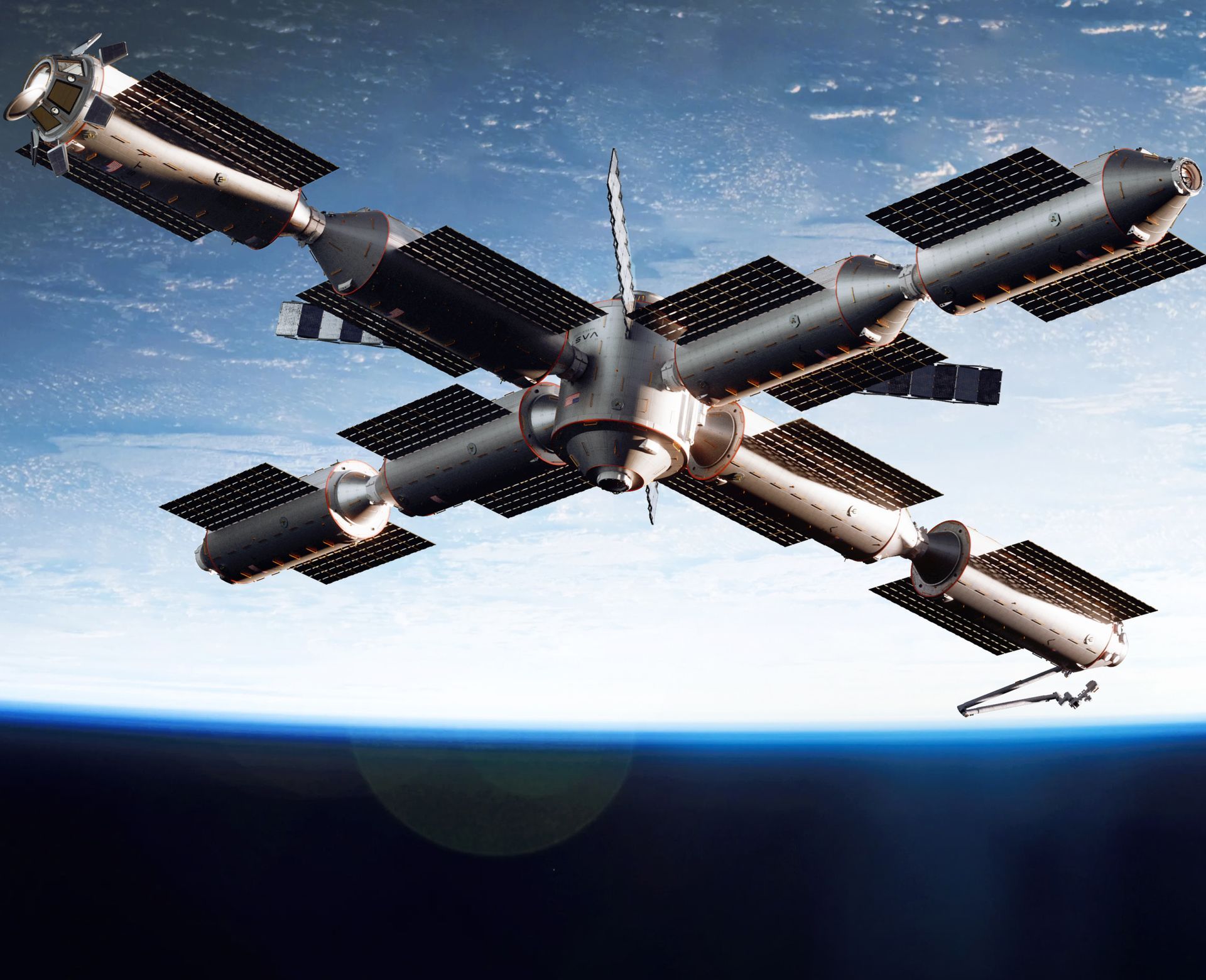
Illustration of Vast's Haven-2 (Image: Vast)
NASA consider commercial ISS replacement, Vast to begin Haven-2 space station
The IAC also provided NASA an opportunity to provide an update regarding their future presence in Earth orbit, with the ISS edging closer to retirement in 2030.
Deputy Administrator Pam Melroy discussed the potential of having continuous “continuous capability” to support a human presence in Earth orbit, admitting that their commercial partners building the replacements for ISS may not not initially have the capability to provide a “continuous” human presence to start with.
Robyn Gatens, ISS director at NASA Headquarters, added to this asking “do we need continuous heartbeat to achieve our objectives, or could we live with something like a crew-tended capability and maybe evolve to a continuous heartbeat?” A “continuous heartbeat” referring to a continuous crewed presence onboard a space station.
While there may not be a necessity with new space stations to have permanent human presence in-orbit, there would almost certainly bring about an element of competition, with China utilising their new Tiangoing station and hosting international experiments onboard in cooperation with the United Nations. Melroy reflected this position, saying that “…there’s a national posture element to it, to not have humans on orbit after what would be nearly 30 years of continuous presence.”
Nonetheless, NASA is hoping for rapid development and innovation from its selected partners through the Commercial LEO Development (CLD) program. One of those partners is the startup Vast Space. The company outlined its plans for the Haven-2 station at the IAC, with the first module scheduled for launch in 2028. It will then be expanded and completed between 2029 and 2032. Max Haot, CEO of Vast, stated that they expect Haven-2 to become "...more capable than anything China and Russia have in orbit at that time."
Other teams are developing their own alternative commercial outposts, including “Orbital Reef”, being led by Blue Origin and Sierra Space, as well as “Starlab”, a project led by Voyager Space and Airbus.
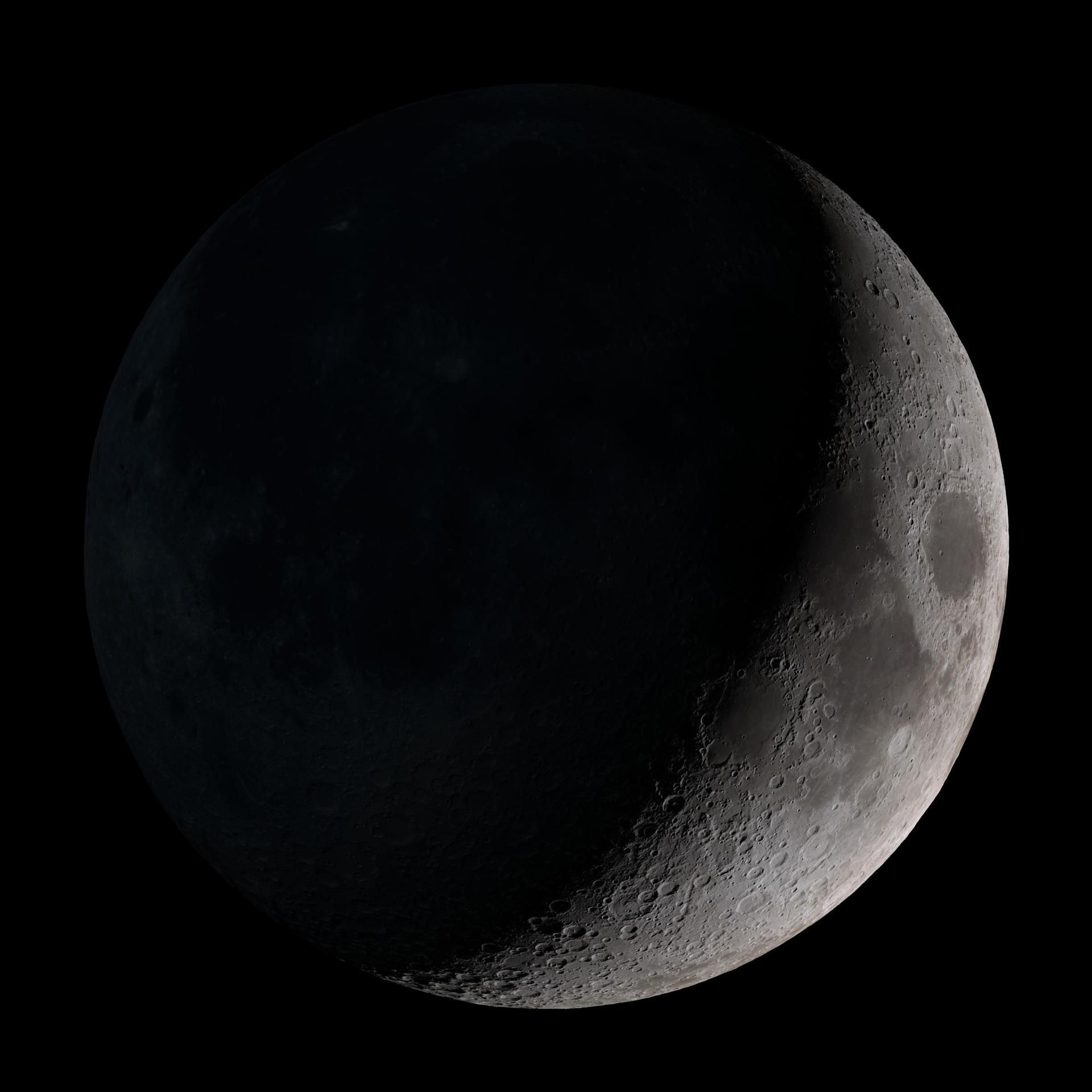
(Image: NASA Goddard)
IAC shows power of innovation, but division still poses risk to stability
The IAC is a chance for agencies, companies and leaders in the space sector to showcase their innovations as well as attract new partnerships and develop cooperative projects. Space has long been a realm of cooperation, and continues to defy Earthly geopolitical divisions in many respects, such as through the ongoing cooperation between the US and Russia onboard ISS.
The spirit of cooperation is now needed more than ever, as the industry is increasingly driven by the private sector and the benefits of space resources and technology become more evident to civil society. With space evolving into a multi-stakeholder environment, it is only through collaborative approaches that we can ensure space exploration and development succeed for all of humanity.
However, deep concerns remain regarding diplomacy and defence. While space has the potential to unite, it is increasingly intertwined with geopolitical issues related to defence, weaponisation, and the securing of space resources.
In response to the Iranian attacks on Israel on October 1, the UK government has imposed sanctions on Iran, including the Iranian Space Agency, which develops technologies that have applications in ballistic missile development. This underscores the seamless connection between space, defence, and conflict zones. Additionally, this week, Iran has sent two domestic satellites to be launched by Russia. The US and its allies have repeatedly warned that such technology could be used to guide ballistic missiles, although Tehran claims that these satellites are intended for agricultural monitoring, resource management, disaster response, and environmental purposes.
Also this week, France and Germany joined the US-led Operation Olympic Defender project, strengthening US-European ties and cooperation in space defence. Olympic Defender was established in 2013 to enhance defence and coordination in response to cyber attacks, anti-satellite threats, and satellite jamming. This development is particularly significant given the rising tensions between the West, China, and Russia, with the US earlier this year accusing Russia of placing a counter-space weapon into orbit.
These instances serve as yet another reminder that while space is often touted as a means of improving life on Earth and providing shared benefits to humanity, it is also becoming an expanding frontier of defence.
Urgency for US-China dialogue amid growing lunar mission cadence
The increasing focus on space defence and the use of commercial applications for defence purposes—such as Starlink in Ukraine—comes at a time when nations and companies are ushering in a new era of lunar exploration. There is concern that the same geopolitical and economic rivalries could extend into outer space exploration, potentially undermining the key principles of peaceful exploration as defined in international law, particularly in the UN Outer Space Treaty.
Leading nations are continuing their efforts to establish responsible and sustainable practices for space exploration, with the US gaining two more members for its Artemis Accords in recent weeks: Estonia and the Dominican Republic. The Accords provide a non-binding set of norms and regulations for responsible behaviour in space, grounded in the principles of the Outer Space Treaty.
The Chinese-led International Lunar Research Station (ILRS) project has also gained significant traction in recent months, with China claiming to have the commitment of more than 10 countries and over 40 international organisations worldwide.
What’s more, at the UN Lunar Conference on Sustainable Lunar Activities this year, we observed a desire among nations and industry leaders to achieve safe, sustainable and transparent activities on the Moon, summed-up by the director of UNOOSA, Aarti Holla-Maini, saying that it had “…shown that there is a growing international consensus of the need for consultation and coordination on lunar exploration.
However, while the efforts of the UN and the Committee on the Peaceful Uses of Outer Space (COPUOS) provide unique platforms for discussion and dialogue, US-China international space relations remain strained due to a lack of communication and mistrust. When asked by Space.com at the IAC this week whether the US and China had engaged in conversations about the exploration of the lunar south pole, NASA head Bill Nelson replied, "The answer to that is no." He further noted, "I assume that there will be some conversations about deconfliction of orbits around the Moon, but those have not been held thus far. As for the south pole of the Moon, that's to be determined."
With a growing cadence of lunar missions and the potential for overlapping landing sites on the Moon, coordination among all nations will be vital in order to adhere to the Outer Space Treaty’s principles of avoiding harmful interference and maintaining safe and responsible practices. However, with NASA’s Artemis-III mission to return humans to the Moon just two years away and China taking its initial steps toward building a permanent lunar base, there is still much work to be done to ensure safe and responsible norms between these two superpowers.
The IAC has again proven how space can innovate rapidly and build relations. However, it is again proof how technology is outpacing law-making, faster than ever.
Share this article

